Situated on the serene banks of the Nhuệ River, just 20km from the centre of Hà Nội, the village is part of Cự Khê Commune in Thanh Oai District. It proudly preserves the authentic characteristics of a Vietnamese village, with its communal roofs, banyan trees and water wharves.
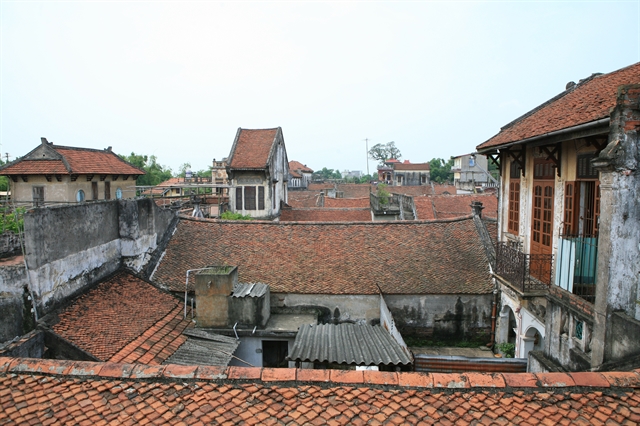 |
| Cự Đà ancient village scene. — VNS Photo Trương Vị |
Cự Đà, one of the remaining ancient villages of Hà Nội, is an intriguing destination for those interested in exploring the unique cultural features of the Northern Delta region.
Situated on the serene banks of the Nhuệ River, just 20km from the centre of Hà Nội, the village is part of Cự Khê Commune in Thanh Oai District. It proudly preserves the authentic characteristics of a Vietnamese village, with its communal roofs, banyan trees and water wharves. Notably, the village also showcases distinct French architectural influences. Apart from its exceptional cultural ambiance, the village is renowned among tourists for its traditional crafts of vermicelli-making and soy sauce production.
Throughout its history, Cự Đà Village has undergone several name changes, finally adopting the name Cự Đà from the 17th century onwards. During its heyday between the 17th and 20th centuries, the village thrived as residents engaged in businesses and owned shops in major cities including Hà Nội, Hải Phòng and HCM City.
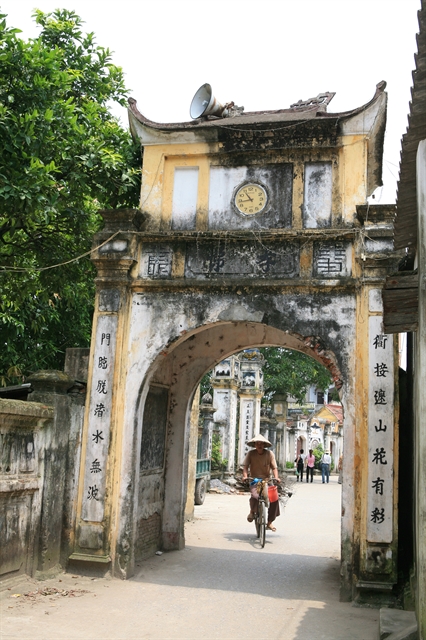 |
| Cự Đà ancient village gate. — VNS Photo Trương Vị |
Cự Đà Village boasts a unique cultural landscape with hundreds of ancient houses. However, currently, only around 50 ancient houses with intact Vietnamese architectural style remain in the Northern Delta.
The village is meticulously planned in a herringbone shape, with the main village road running alongside the riverbank. On the left side, there are shady trees and a water wharf, while on the right side, there are houses. Numerous small alleys, made of red bricks, branch off from the main road, leading to different hamlets. Each alley begins and ends with gates, with the final gate opening to the fields. The alleys exhibit a similar layout, with two parallel rows of houses facing each other.
The ancient houses in Cự Đà Village adhere to a consistent design. They feature a covered gate that leads into the yard, a main house facing the street, and a subsidiary house situated behind the main house, separated by a narrow yard. The typical house plot measures around 250-350sq.m, while the main house comprises five rooms, measuring 12m in length and 7m in width. The house walls also serve as the boundary walls of the property, and there are no windows facing the alley.
Among the numerous ancient houses in Cự Đà, Trịnh Thế Sủng’s house, built in 1874, stands out as best preserving the village’s ancient characteristics. This five-room house boasts 35 wooden columns, constructed from xoan wood. Elaborate carvings adorn each column, beam and wooden wall. The craftsmanship exhibited in the rafters and columns showcases intricate lines, adding a touch of softness and vividness. The roof, covered with yin and yang tiles, further enhances the house’s appeal. In the central area of the house stands the ancestor altar, adorned with parallel sentences and a lacquered board. Overall, the house provides a cozy environment during winter and a cool escape during summer.
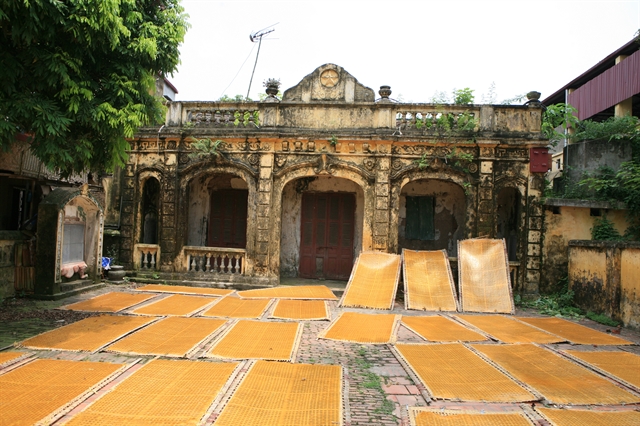 |
| Glass noodles spread out to dry in Cự Đà Village. — VNS Photo Trương Vị |
Aside from the three-room and five-room houses, Cự Đà Village also features two-story French-style houses constructed long ago.
In addition to its wealth of ancient houses, Cự Đà also boasts pagodas and temples that hold national monument status, representing remarkable examples of ancient architecture. Cự Đà Pagoda, with a history spanning 300 years, has undergone some restoration yet retains its original architectural charm. Đàn Xã Tắc, constructed in the early 20th century using green stone, serves as a place of worship and prayer for favourable weather and abundant harvests.
Other historical landmarks, such as a pair of stone toads, a light pole and a flagpole, contribute to the captivating sights that await those looking to explore the beauty of Vietnamese culture.
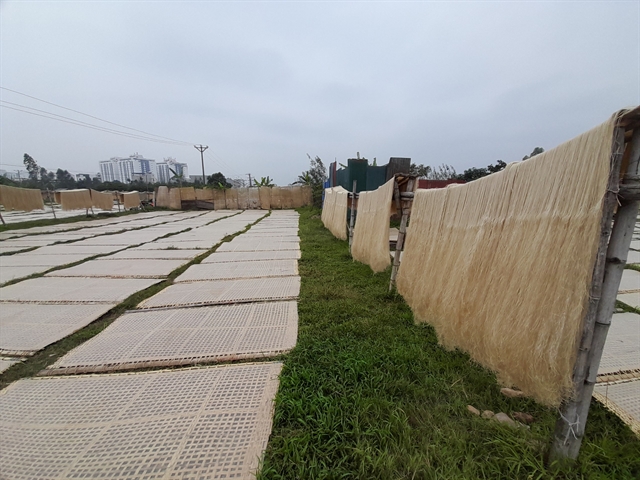 |
| Glass noodles air-drying in Cự Đà Village. — VNS Photo Thanh Nga |
Since its establishment, Cự Đà Village has been closely associated with the traditional crafts of glass noodle making and soy sauce production, which have become cherished traditions of its people. Over generations, these culinary delights have become integral to Hà Nội’s gastronomic culture, and tasting them is highly recommended.
 |
| The process of making glass noodles is supported by machines, but human labour is still vital, especially in the drying stage. — VNS Photo Thanh Nga |
While the craft of making glass noodles began in the 1950s and 1960s, pioneered by Trịnh Văn Cẩn, the art of soy sauce production has existed in the village since its inception and continues to thrive to this day. Nearly 400 households in Cự Đà depend on these occupations for their livelihood.
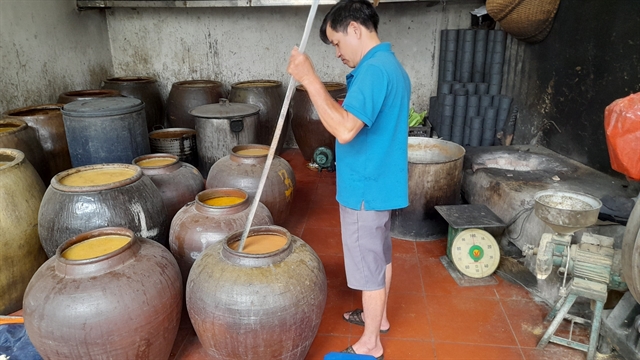 |
| Cự Đà soy sauce is famous throughout the country. — VNS Photo Thanh Nga |
Despite the changes brought about by modern life, Cự Đà retains a tranquil charm. Taking a moment to savour the fresh air and experience the warmth and simplicity of the villagers here is a truly rewarding experience. VNS
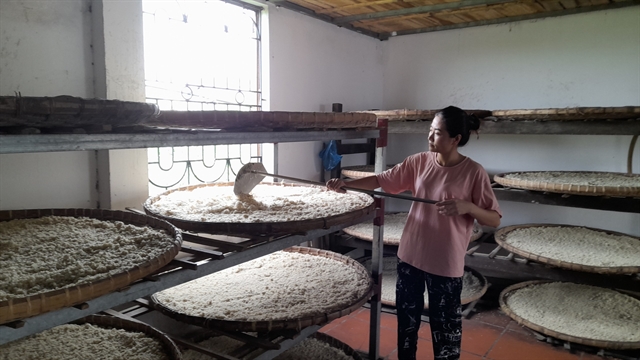 |
| Culturing yeasts on boiled sticky rice to make soy sauce. — VNS Photo Thanh Nga |
